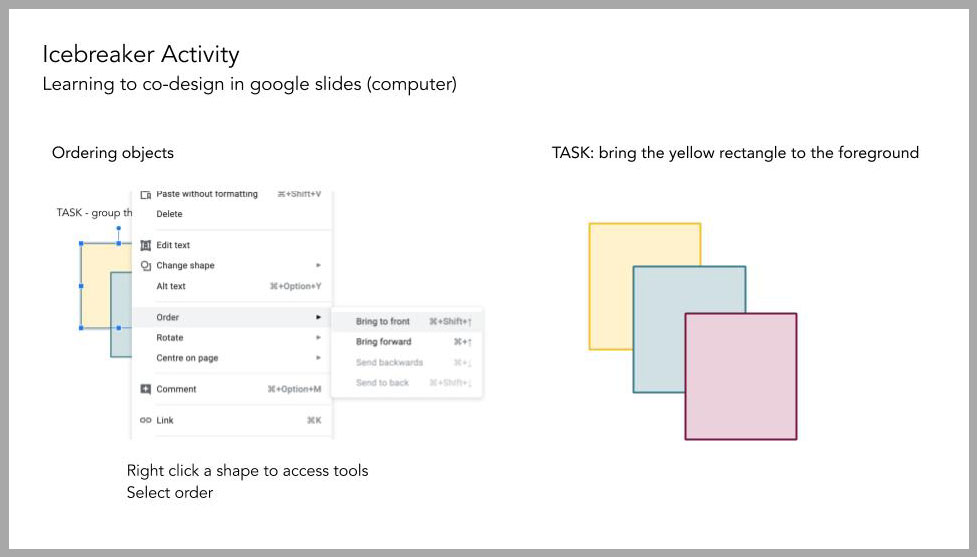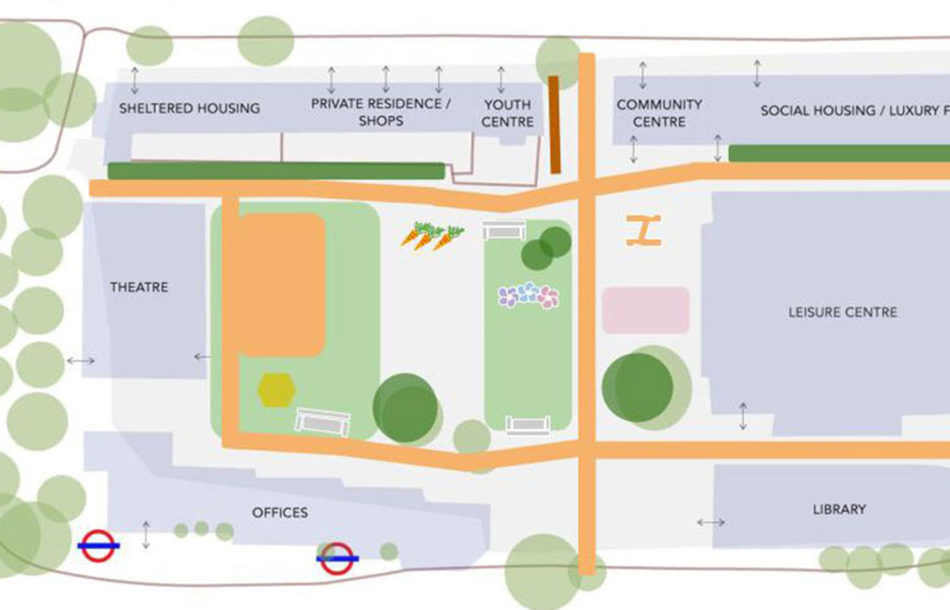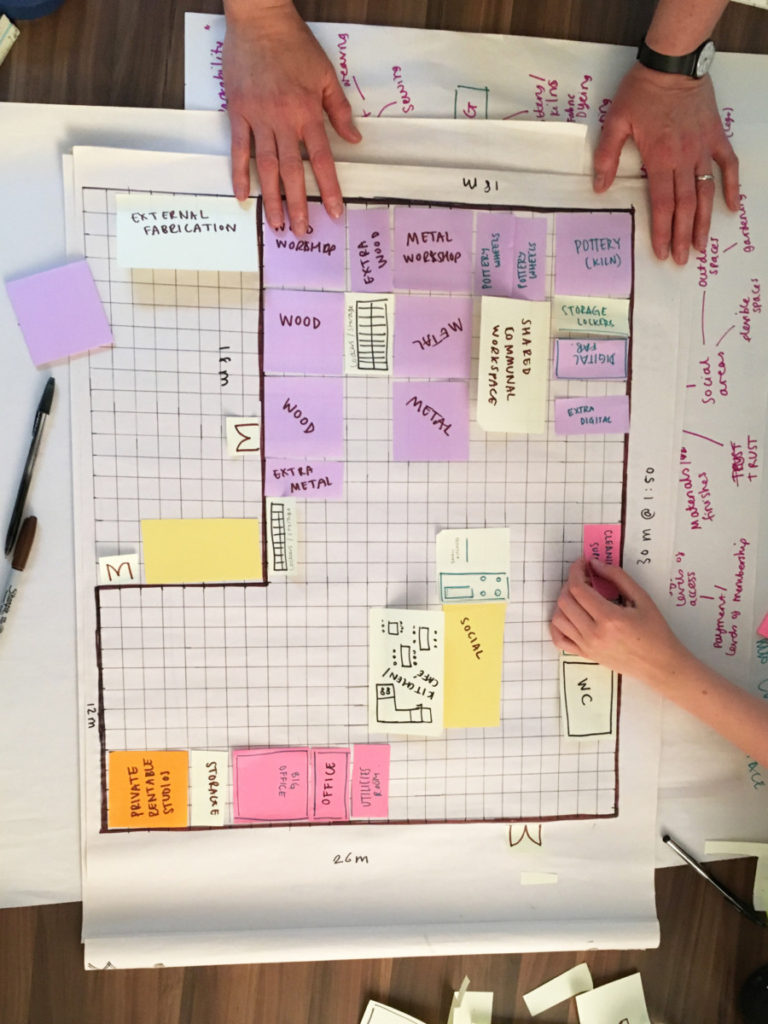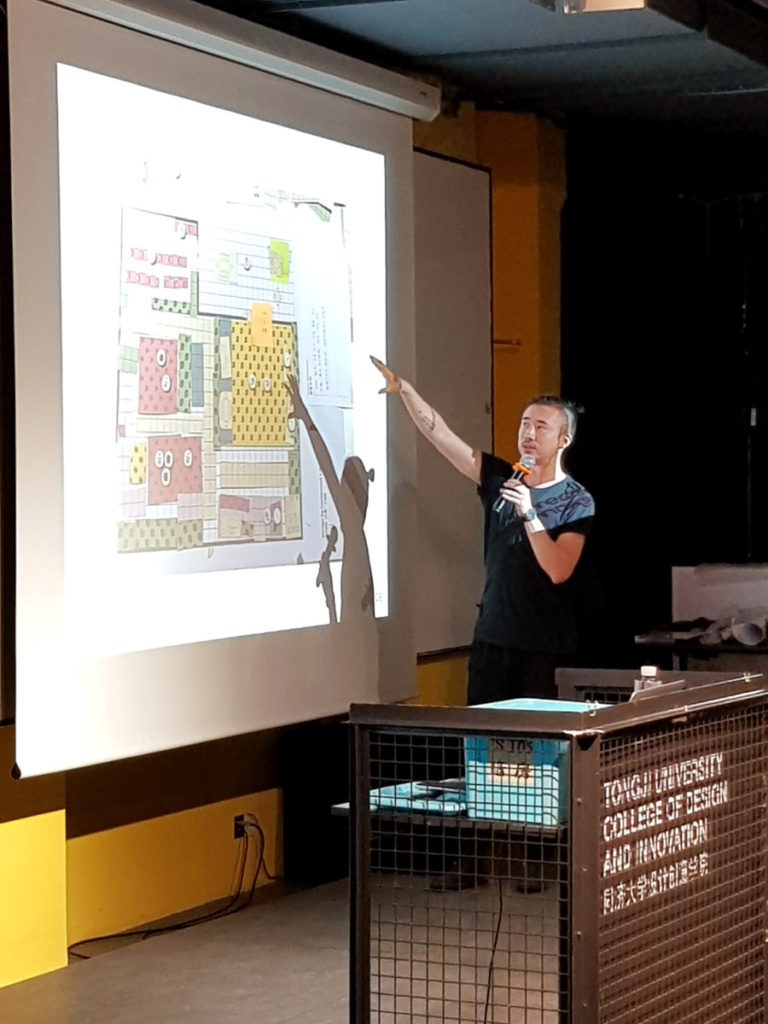Written by:
By Grace Crannis & Sophia de Sousa
Like everyone, we at The Glass-House are grappling with how we can carry on with our work in the context of physical distancing imposed by the Covid-19 pandemic. A big part of this is exploring how we can adapt our face-to-face design engagement approaches and workshops to an online context.
To explore this, we decided to focus on our Design by Consensus workshop, which we regularly use to bring people together to explore collaborative design, and both the challenges and opportunities that come with bringing multiple and varied stakeholders together through design and placemaking. This is a hands-on and interactive workshop that we have used in a variety of contexts, and it works well with both a small group and large number of participants. It requires people to negotiate and work together to develop design ideas and ultimately, to produce some representation of their shared design vision for an open space or building.
As we had already adapted this workshop for the specific context of co-designing makerspaces in China, we were also keen to explore whether it would be possible to create an entirely online version of this interactive and collaborative workshop.
Left: Glass-House design sprint to adapt the original workshop into a makerspace co-design tool. Right: The workshop in use in Tongji University, China.
Faced with the challenge of turning this very physical workshop into an open source digital tool, we prioritised ease of use, design clarity and sharing potential when making decisions. After discussing the merits of various digital platforms, we settled on google slides for its properties as a flexible, free platform that is easy to download and is compatible on many platforms and devices.
Throughout our design sprint, we used the platform to test our conversations and quickly mock up visuals. A few features came in handy: the ability to upload slide backgrounds to ‘lock’ images into place, the arrange layers tool & uploading PNG files to keep the opacity of background layers. With a few exceptions, we decided to keep all shapes and icons built using google slides’ tools in keeping with the ethos of the workshop and to allow workshop participants to create and add their own icons.
![]()
![]() Ready to use icons created using Google Slide shape and line tools
Ready to use icons created using Google Slide shape and line tools
Breaking down and explaining the task in a way that could be understood regardless of skill set was an interesting challenge, and we settled on illustrated instructions and some introductory tasks to ease participants in. As with introducing any new design language, we felt it important to create spaces for people to build confidence with the terminology and tools, and to take people through clear and manageable steps together.



Icebreaker activity breaking down the actions needed during the workshop
Next, we will be testing this digital workshop across user groups and platforms, and using this resource as part of some of our live projects which cannot currently use face-to-face meetings. We hope to make it open source and accessible soon.
For now, innovating online engagement is a necessity. When this crisis is over, we will have the opportunity to build further on what we have learned, and online engagement techniques will continue to evolve. However, we must not forget the strengths of in-person activities, nor the fact that while online engagement can create new opportunities for inclusion for some, they can also exclude others. We have explored this in a companion blog Accessibility and online engagement.
Ultimately, it is through a multi-faceted approach to engagement that we will reach and involve the most people in decision-making about our shared future. So as we all experiment with online working and engagement in this time of physical isolation, let’s learn as much as we can about both the strengths and limitations of this kind of interaction, and let’s do our best to share our lessons learned through what will undoubtedly be a time of innovation as well as challenges.
You may also like to read about our Gaming Design Studio in collaboration with The Open University, which was co-designed and co-facilitated with children, in which we used online gaming to introduce children to building design.



